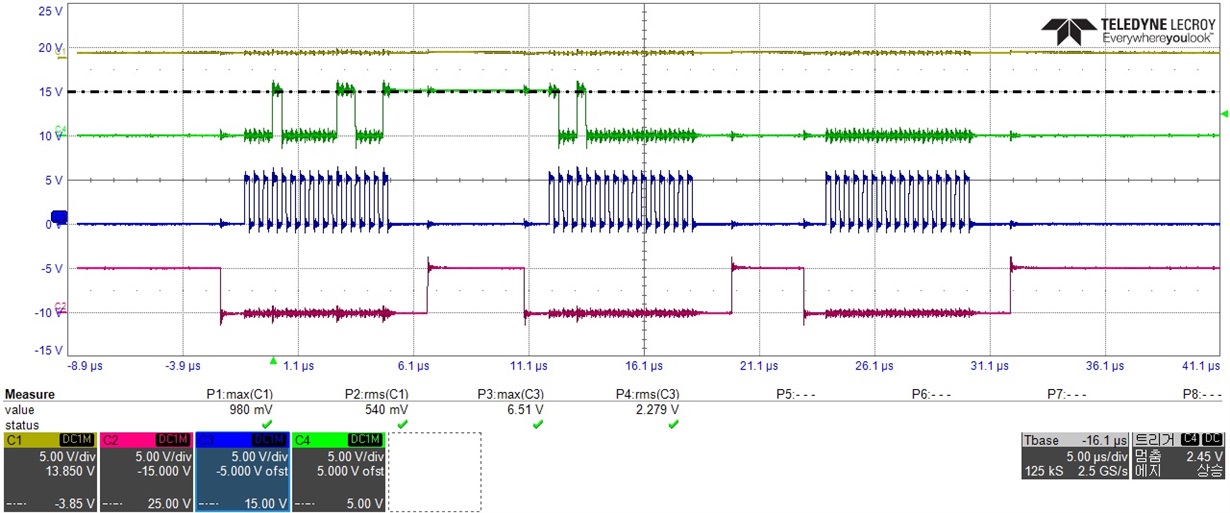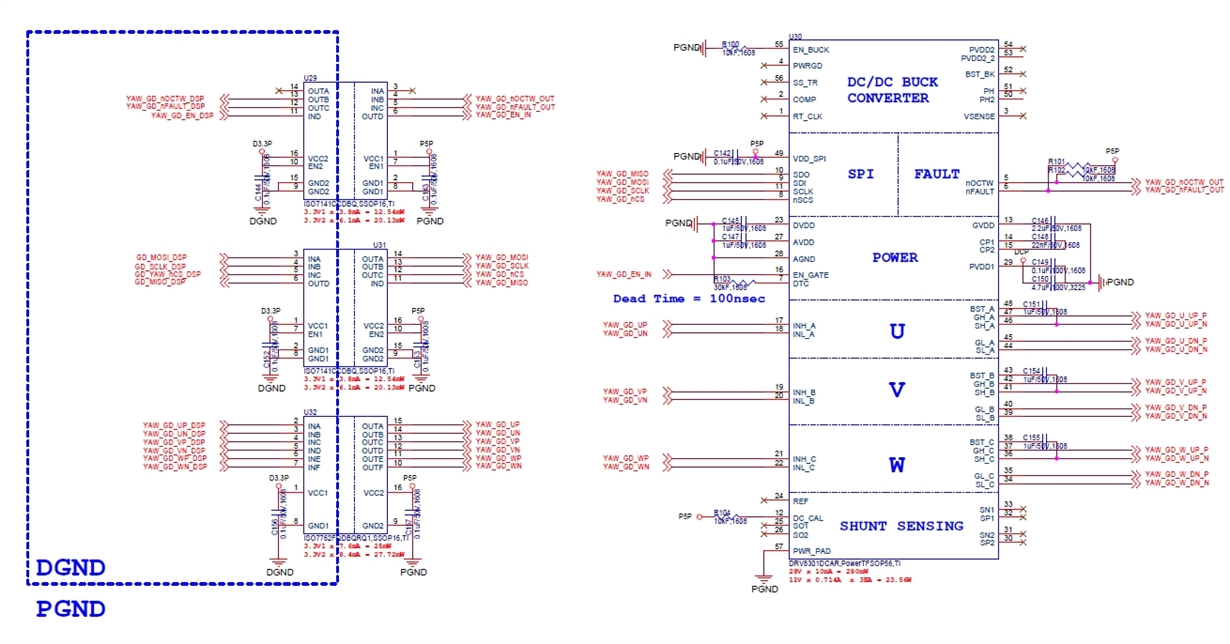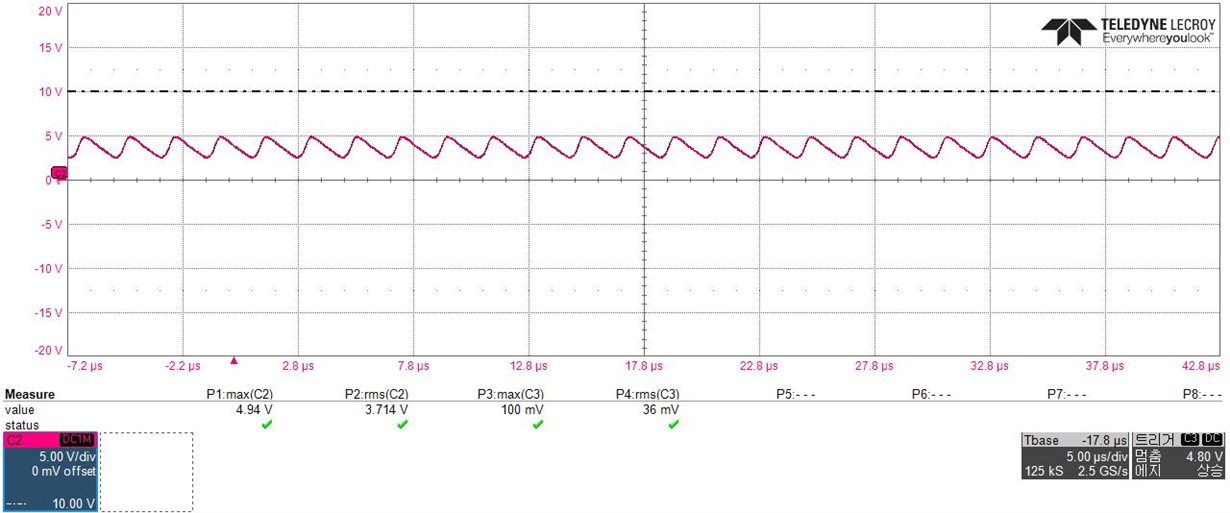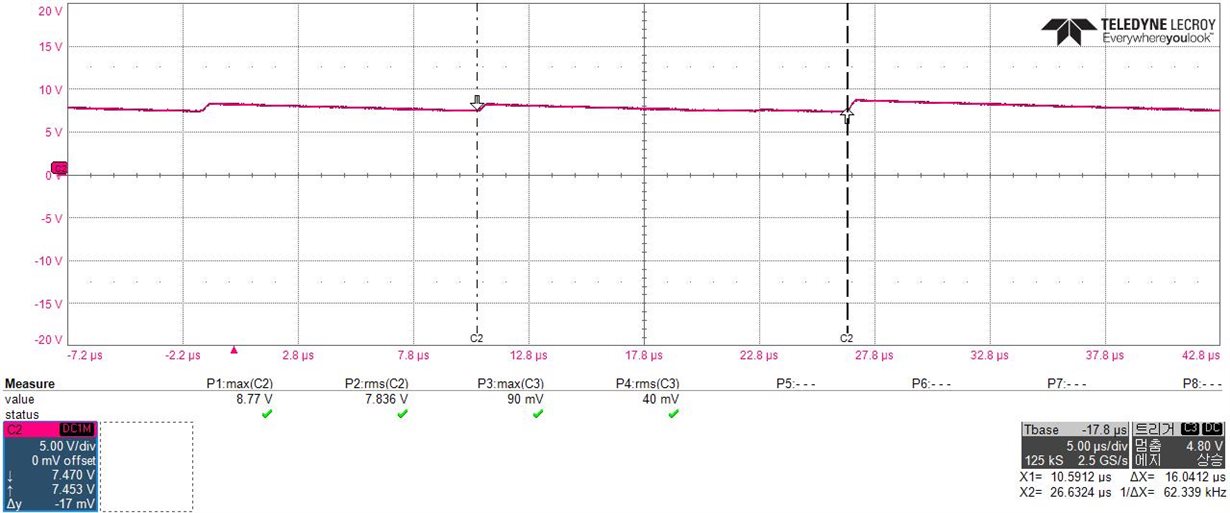Tool/software: Code Composer Studio
we try to use the DRV8301 and do the spi communication, but we can not receive the message from MISO.
mcu : TMS320F28377D
CLk : 2.5MHz
EN_GATE is set to high.
Yellow : MISO
Green : MOSI
BLUE : CLK
LED : CS
SPI Setup Code is
void SPI_init()
{
SPI_disableModule(SPIB_BASE);
SPI_setConfig(SPIB_BASE, DEVICE_LSPCLK_FREQ, SPI_PROT_POL0PHA0,
SPI_MODE_MASTER, 2500000, 16);
SPI_enableFIFO(SPIB_BASE);
SPI_resetTxFIFO(SPIB_BASE);
SPI_enableTalk(SPIB_BASE);
SPI_disableLoopback(SPIB_BASE);
SPI_setEmulationMode(SPIB_BASE, SPI_EMULATION_FREE_RUN);
SPI_enableModule(SPIB_BASE);
}
and our schematics of DRV8301
What is the problem?. Could you plz help us for reading the registers.
Thanks for a quick reply.
Best regards.





